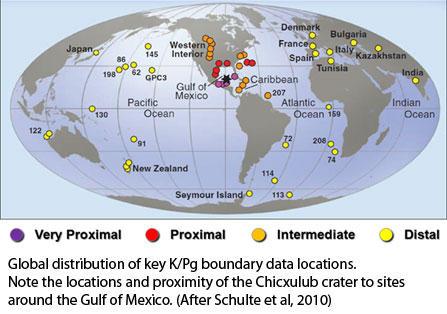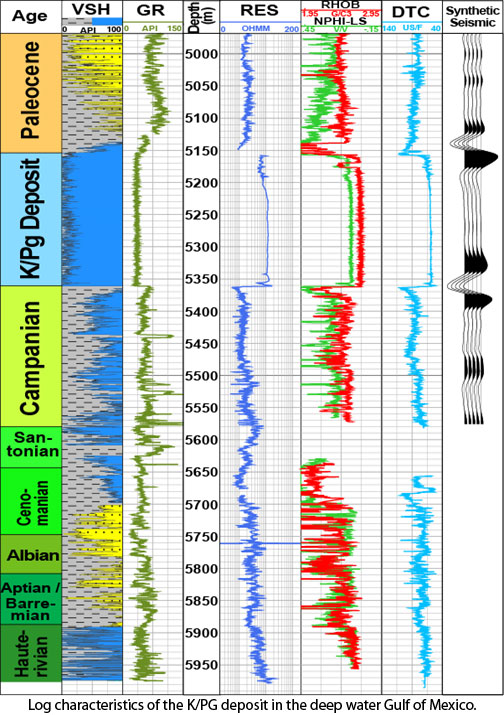Effect of the K/Pg boundary Chicxulub impact on the northern Gulf of Mexico
By:
Erik Scott, Richard Denne, James Kaiser and David Eickhoff
Marathon Oil Company

| When: | Friday, May 11, 2012, 10:30 a.m. to 11:30 a.m. Join us for coffee beginning at 10:00 a.m. |
| Where: | Seminar Conference Room, 10100 Burnet Road, Bldg 196-ROC, Austin, Texas 78758 |
| Host: | John Snedden, UTIG |
Click for a Live Broadcast.

Abstract
The Chicxulub impact on the Yucatan peninsula at the Cretaceous (K) / Paleogene (Pg) boundary has been cited as the cause of numerous geologic events including a mass extinction of 40-70 % of all species, global distribution of ejecta material and re-mobilization of sediments along eastern North and Central America as well as around the Gulf of Mexico and redistributing it out into the deep water Atlantic, Caribbean and Gulf of Mexico.
Well log and biostratigraphic data from Cretaceous well penetrations in the deep-water northern Gulf of Mexico show a distinctive micritic deposit at the K/Pg boundary that is similar in composition and biostratigraphy to sediments found near the Chicxulub Crater, DSDP/ODP cores and outcrops in Cuba. Investigation of seismic data in the northern Gulf of Mexico shows anomalous sedimentary wedges of high amplitude reflectors situated at the top of the Cretaceous section that are interpreted to be the resulting deposit from the mass transport flows and suspension fallout initiated by the impact.
At the end of the Cretaceous, the northern Gulf of Mexico was undergoing allocthonous salt movement from the Jurassic-aged Louann Salt that was expressed in numerous salt highs defining potential clastic sediment fairways. The sediment redistribution caused by the Chicxulub impact filled in the available accommodation space around the salt highs, as well as depositing on the highs themselves, and altered the seafloor topography across the northern Gulf of Mexico resulting in a highly efficient transportation pathway from shelf to deep water and influence the sedimentation patterns of the subsequent sediment gravity flows of the Wilcox Formation.




